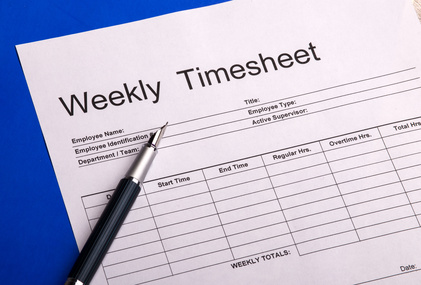“I’m using paper timecards but people keep telling me I should switch to a phone or computer app. What’s the difference?”
Your HR Survival Tip
The biggest differences between timekeeping methods are how they are used and their accuracy. There are a few basics any timekeeping system should provide, particularly in California. Keep in mind the whole point of a timecard is to record time worked so the employee is paid correctly.

You want exact times, not rounded times (even if you later round). A timecard showing they started work each day at 8:00am and left for lunch at noon, etc. will not save you from claims. No one is that timely and the courts know this means they weren’t using “real” times. A normal employee is more likely to clock in at 7:58am or 8:02am and take their lunch at 11:50am or 12:10pm. Anything other than specific times can and will be questioned.
Are they entering the information each time they stop for the meal break and return to work? California has very specific rules about the timing and length of that meal break. If the timecard doesn’t show exactly when they started and stopped the meal break, you could be subject to penalty pay. This is one hour of pay the employee receives if you can’t prove they started the meal break before the 5th hour of work or if they take less than 30 minutes. Again, just popping 30 minutes in there won’t prevent claims.
The California Supreme Court recently gave their ruling on de minimus time. This is those few seconds or minutes that aren’t actually on the timecard. Do they pick up your emails or messages after they’ve clocked out for the day? Do they need to do a couple of work-related things on their way out the door after they’ve clocked out? In California, the decision was made that this is paid time and possibly even overtime.
Unless you ensure your employees are using your timekeeping system correctly and you can show proof of all time worked (and paid), you are at risk for claims. A digital method for timekeeping is typically more accurate than a paper timecard. However, you may also find more missed “punches” by the employees. Regardless of which method you choose for timekeeping, you can’t just implement it and ignore it. Regularly review the reports and/or timecards to ensure you’re still compliant. It can be very costly to just assume you’re protected.




Leave a Reply